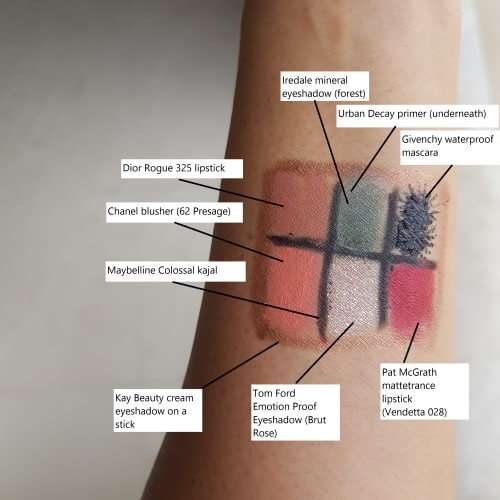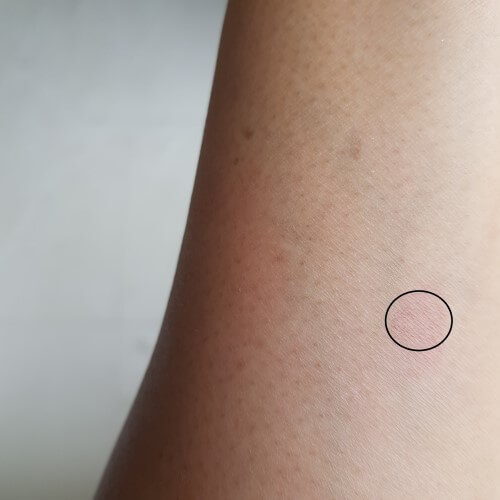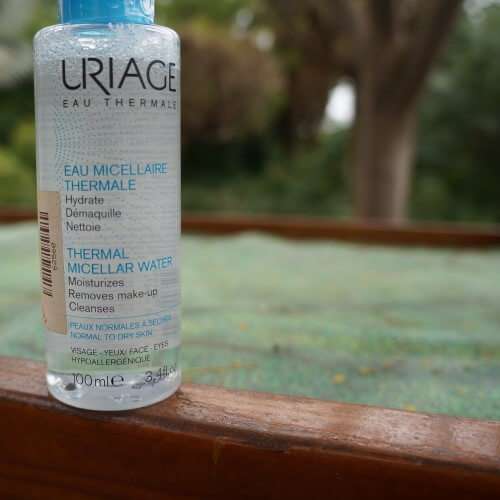Micellar waters are a very fancy name for a mild cleanser with the following characteristics: they have mild surfactants (or cleaning agents); are non-foaming and contain moisturising ingredients.
You can read about the technical detail on how micellar water or facial cleansers work at this BLOG.
What am I testing and why?
I am road-testing Uriage’s micellar water (blue cap), specifically the claim that it removes make-up.
Before photo
After applying a copious mix of waterproof, pigmented and shiny make-up, my forearm looked like this:

I then pressed down a pre-soaked (in micellar water) cotton pad on the above patch and counted to 5. Finally, I wiped over this area (quite firmly) exactly 4 times.
After photo

This micellar water removes most make-up but leaves a faint trace of the Colossal Kajal and the highly pigmented lipstick. This puts it in the top 5 make-up removing micellar waters for this reason. Not many micellar waters are able to make a dent at the Pat McGrath lipstick, and this does…
Tell me about the ingredients…
The primary surfactant is Poloxamer 184, which is a mild but clearly quite effective surfactant and a secondary surfactant, Cetrimonium Bromide. It also has Polysorbate 20 which are mildness additives that are designed to reduce the irritation potential of the surfactant system. Finally, like most French micellar waters it then has Glycerin (a humectant) as the 4th ingredient as well as caprylyl/capryl glucoside (an emollient) and both act to moisturise the skin.
To buy, or not buy?
There is very little not to like about this product: it removes most make-up AND makes a serious dent at Pat McGrath’s lipstick – which is a feat of nature in itself. There is a slight fragrance to the product but its pleasantly subtle. I would buy this product again to remove make-up.
